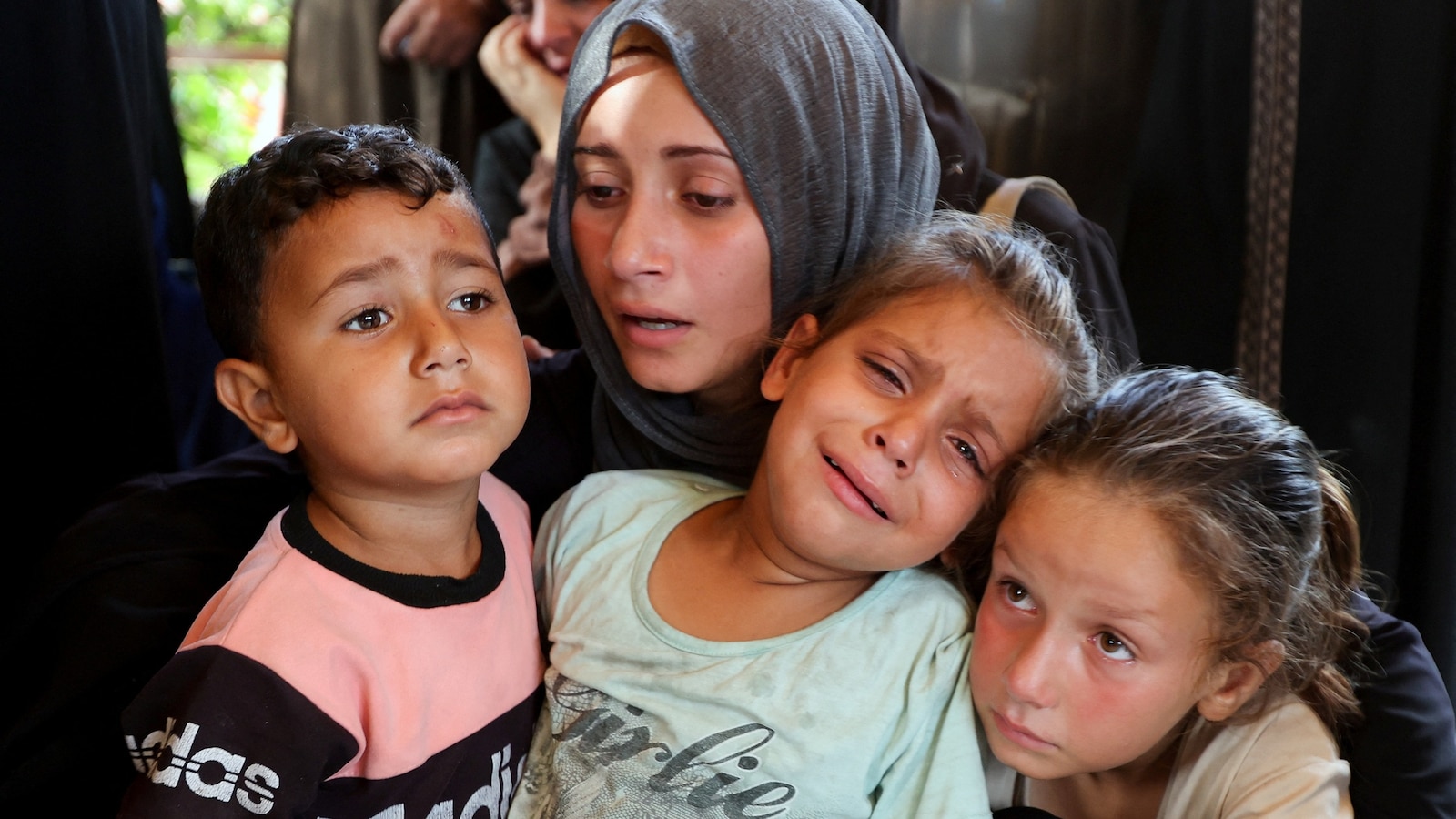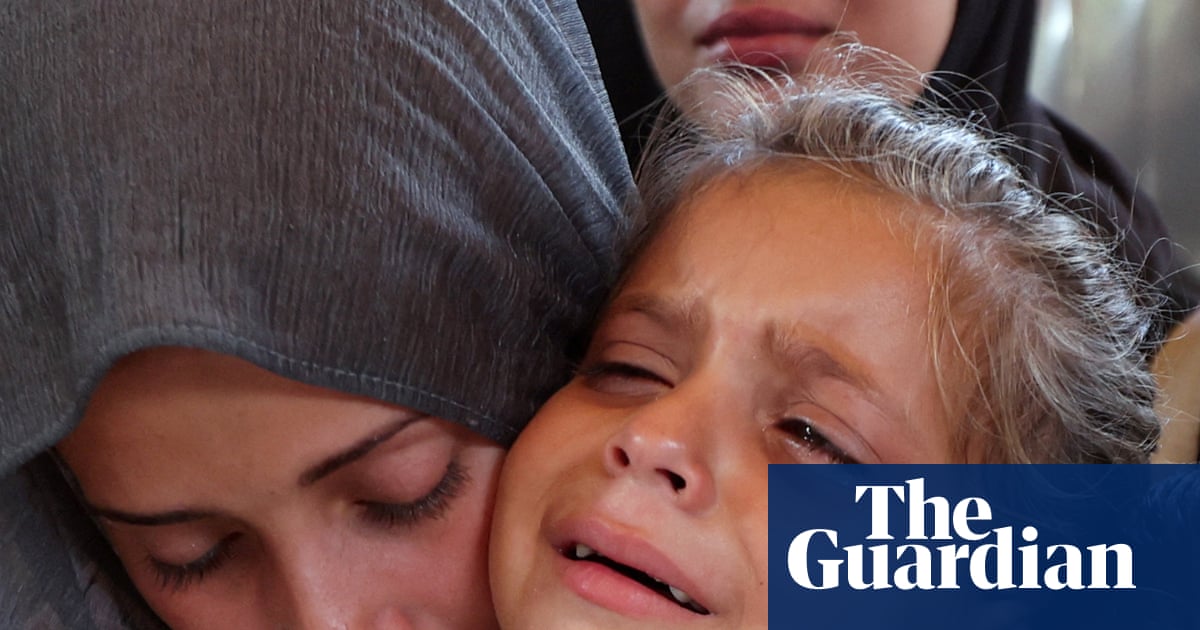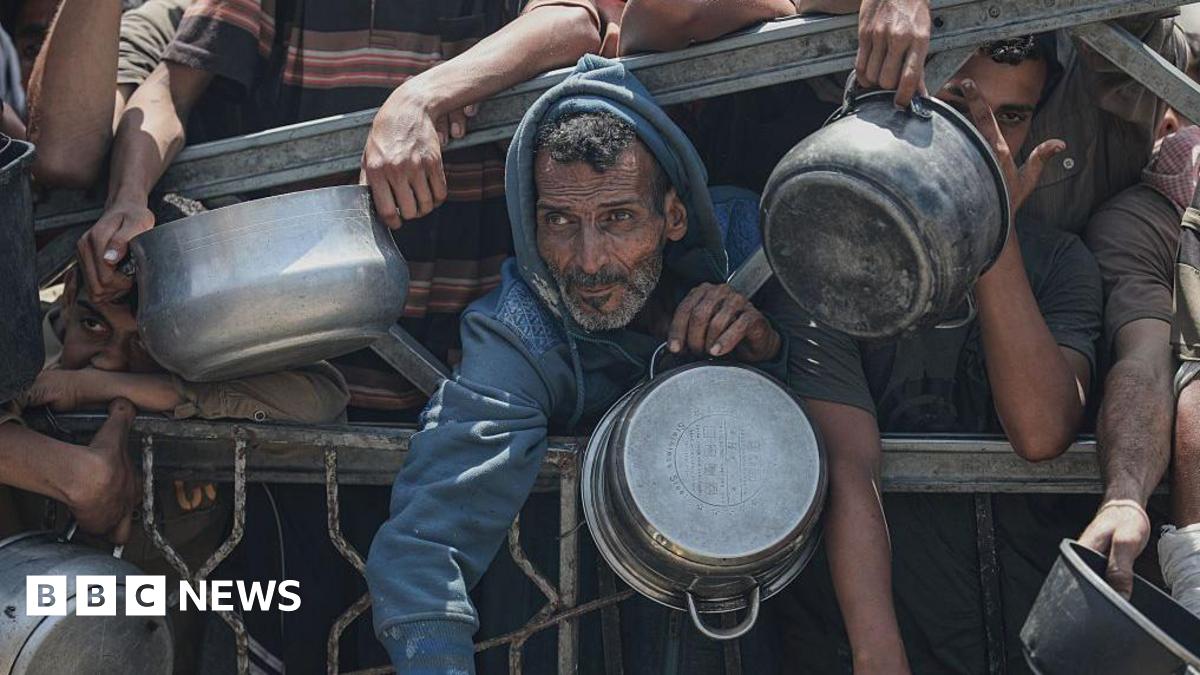T4K3.news
Rising death toll in Gaza as violence against aid seekers escalates
Hospitals report 18 deaths from Israeli fire amid increasing malnutrition-related fatalities.

The humanitarian crisis in Gaza worsens amid rising violence and hunger-related deaths.
Gaza hospitals report rising death toll from Israeli fire and hunger
Hospitals in Gaza reported that Israeli fire killed at least 18 Palestinians on Saturday, with several casualties occurring while people sought food. This incident is part of a growing crisis marked by restrictions on aid delivery and increasing malnutrition-related deaths. According to the UN, since May, 859 individuals have died near Gaza Humanitarian Foundation aid sites, where violence has become common. Health officials noted a surge in patients suffering from gunshot wounds as they attempted to reach aid. Witnesses described the chaos around food distribution sites amid ongoing airstrikes. Critics, including US ambassador Mike Huckabee, claim aid distribution is sufficient, despite conflicting reports from humanitarian workers about increased need and dwindling resources. The situation has become dire, with the health ministry reporting recent deaths from malnutrition, including children. New plans for international food airdrops have been criticized for their inefficiency, as calls continue for the reopening of land borders to allow more comprehensive aid distribution.
Key Takeaways
"The worst-case scenario of famine is now playing out in Gaza."
This statement highlights the severity of the food crisis amid conflicts.
"If there is political will to allow airdrops, there should be similar political will to open the road crossings."
Philippe Lazzarini calls for more effective aid solutions amid political barriers.
"We weren’t close to them, and there was no threat."
Witness Abed Salah describes the chaos near the GHF site, raising questions about security protocols.
"The war needs to end."
A family member of a hostage expresses the urgent need for peace amid ongoing violence.
The situation in Gaza exemplifies the intersection of humanitarian crisis and political stalemate. As the death toll rises and malnutrition spreads, public outcry grows against perceived governmental failures. The intricate balance of ensuring security while providing aid presents a significant challenge. The international community's response appears fragmented, with countries advocating for increased assistance contrasting sharply with on-ground realities reported by aid workers. Observers must consider not only the immediate effects of violence but also the long-term implications of restricted aid access on the civilian population. Without significant political will to rejuvenate aid flow, the risk of famine persists, raising ethical concerns about responsibility in conflict zones.
Highlights
- Over 800 lives lost near aid sites since May is a tragic humanitarian crisis.
- Malnutrition deaths in Gaza now include 93 children since the conflict began.
- Aid delivery projections must acknowledge the ground realities faced by civilians.
- Airdrops, while a start, fail to meet the desperate needs of Gaza.
Significant humanitarian and political risks identified
The ongoing violence and inadequate aid access pose severe humanitarian risks, raising concerns about potential backlash against governmental actions. The number of deaths from malnutrition highlights the urgency of international response. Political tensions remain high as public criticism grows.
As the crisis deepens, the need for actionable solutions becomes increasingly urgent.
Enjoyed this? Let your friends know!
Related News

Rising death toll reported near Gaza aid centers

Israeli forces kill multiple aid-seekers in Gaza
UN food agency reports attack on Palestinians in Gaza

Death toll in Gaza rises amid aid crisis
Israeli airstrikes kill 21 in Gaza as hunger crisis escalates

Gaza faces severe famine conditions as conflict continues

Seven more die from malnutrition in Gaza

IDF defeats Hamas battalion in Beit Hanoun
